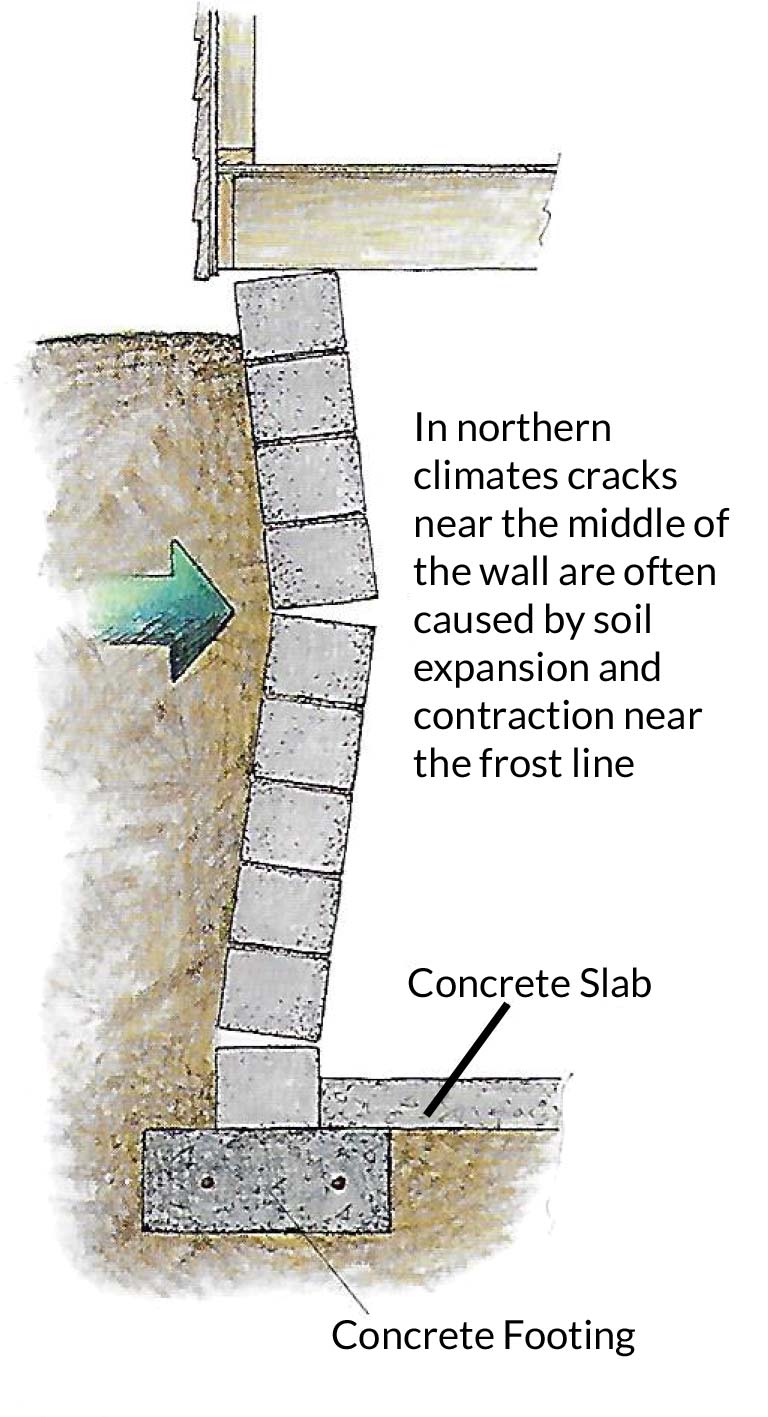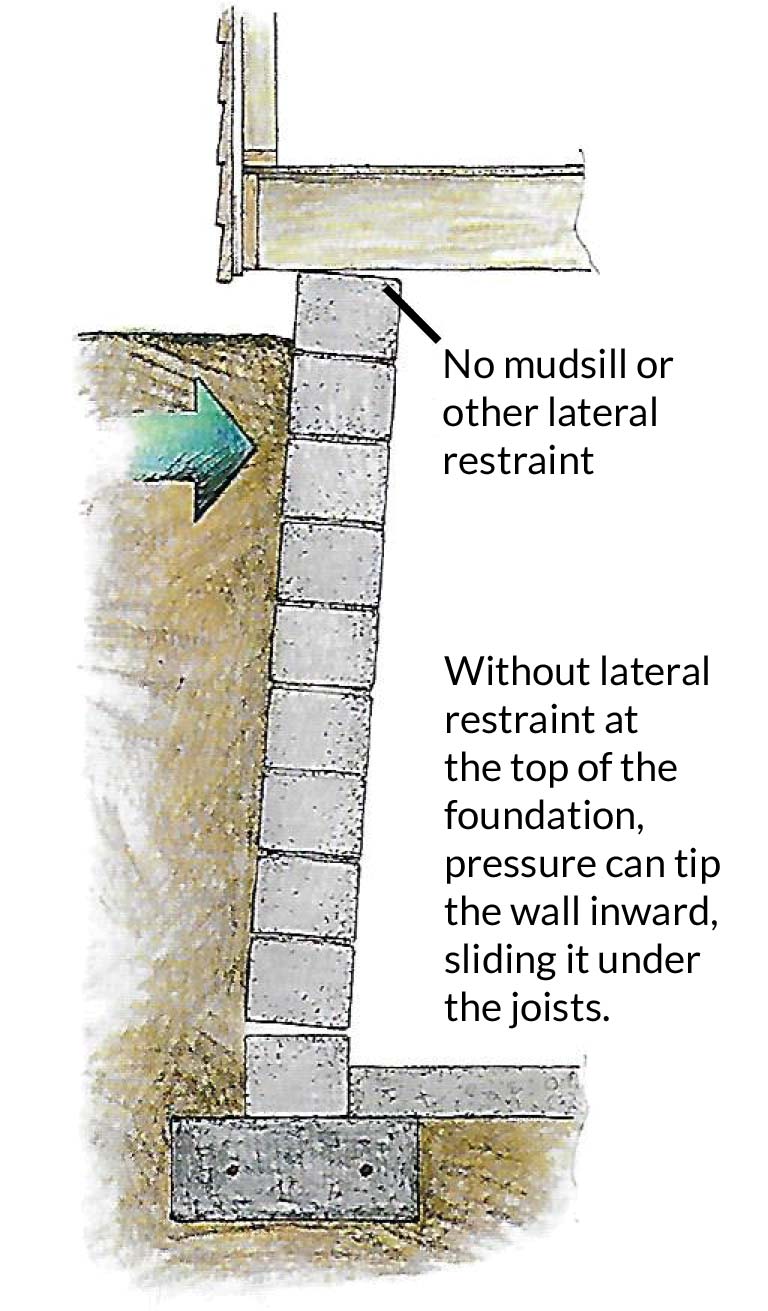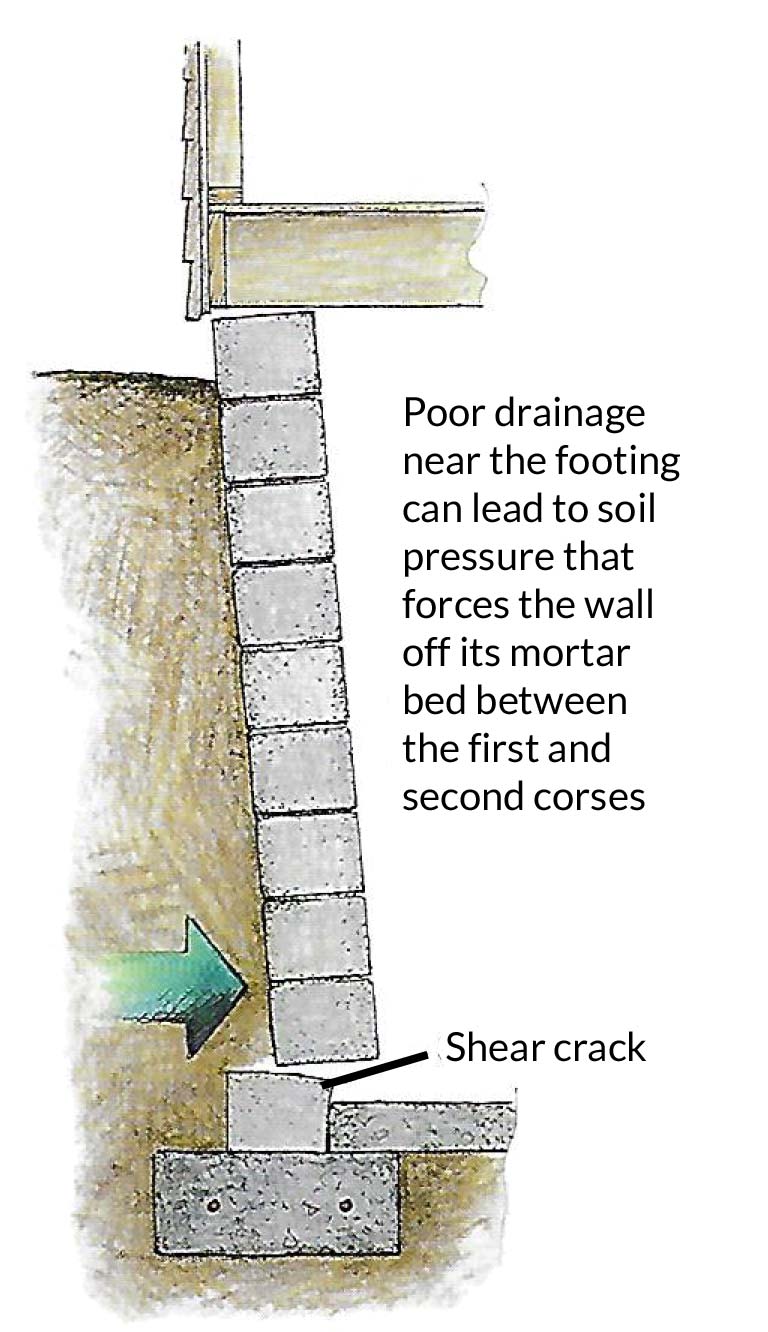Foundation Repairs
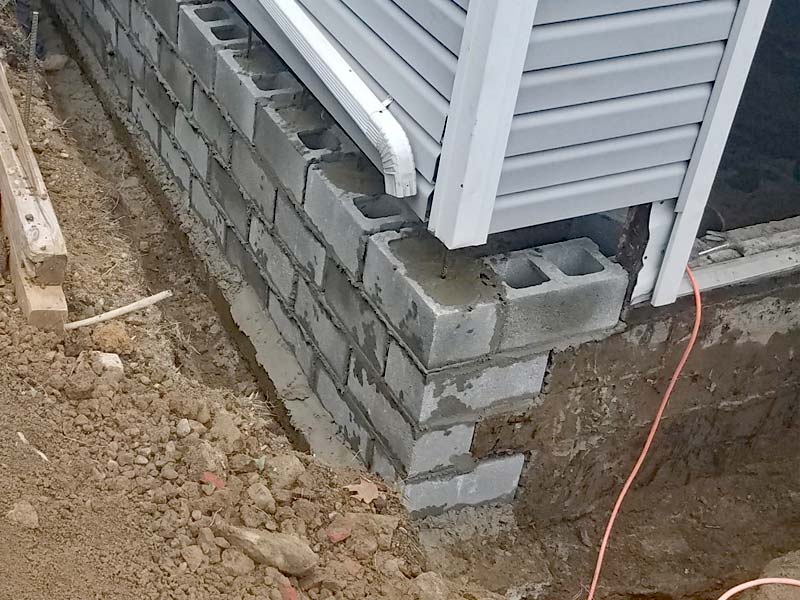
The foundation and its structural integrity is the heart of a home, and when it is compromised the value of that property is greatly depreciated. Each issue is evaluated to see what the best solution will be. For the most part, addressing these types of problems in the early stages yields the best results and may save $1,000s-$10,000s in further damage.
Common Causes of Foundation Failure
When foundations are first built they are very strong. But over time as they sit in the ground without proper drainage & protection they begin to weaken, until eventually they can fail under the pressure. There are many contributing factors to their breakdown.
- Hydrostatic Pressure
When water builds up around your foundation walls, it creates intense pressure. Over time, this pressure can cause walls to crack or buckle. Water can also erode the soil beneath your footings, leading to settling, sinking, and even structural failure. - Soil Acidity and Corrosion
Acidic soils react with the lime in concrete, gradually breaking it down. You might notice efflorescence—a white, chalky substance on your walls. This is a sign of weakening concrete, making the structure more prone to cracks. - Clay Soil Expansion & Contraction
Clay-rich soil, which is common in New Jersey, expands significantly when wet and contracts when dry. This constant swelling and shrinking puts repeated stress on your foundation walls, eventually leading to structural damage. Keep in mind—your walls support the home, not the basement floor. - Freeze-Thaw Cycles
In the Northeast, freezing temperatures can cause the soil to expand as water turns to ice—often cracking foundations about 24–30 inches below ground (around the frost line). Block foundations are especially vulnerable at mortar joints and at the center of long walls, where structural support is weakest.
“My son and I cannot believe the work Bart and his team accomplished in our basement! Everything was done as he said it would be. Amazing job both inside and outside when they completed the work! They are the best company to choose to waterproof your home! Thanks again! “
– Kathleen, Whippany NJ
Common Failures in Concrete Foundations
Water accumalation and the seasonal expansion and contraction of the soil put lateral pressure on foundation walls. When proper drainage is not in place, the pressure against a concrete-block foundation wall can create failures along mortar joints and cracks in the blocks themselves.
Cracked Wall
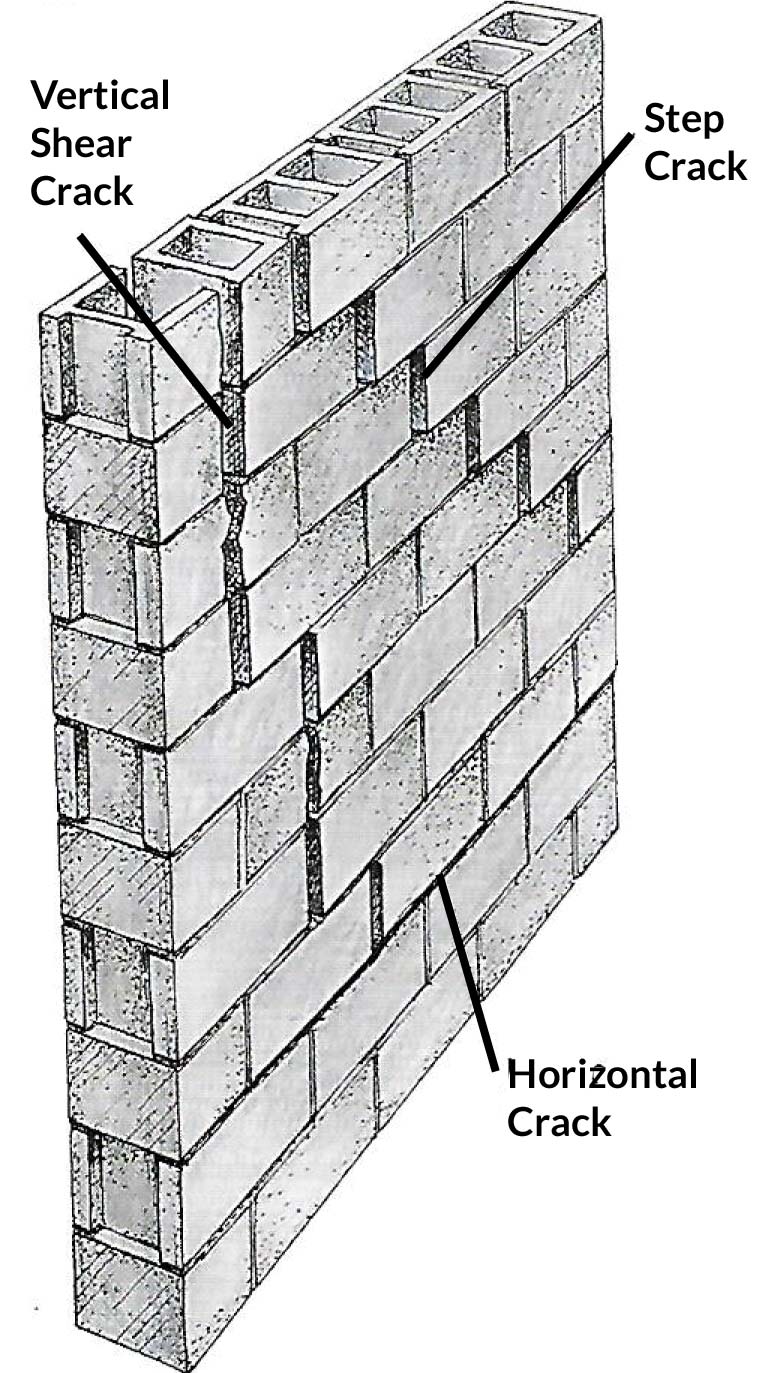
Bulged Wall
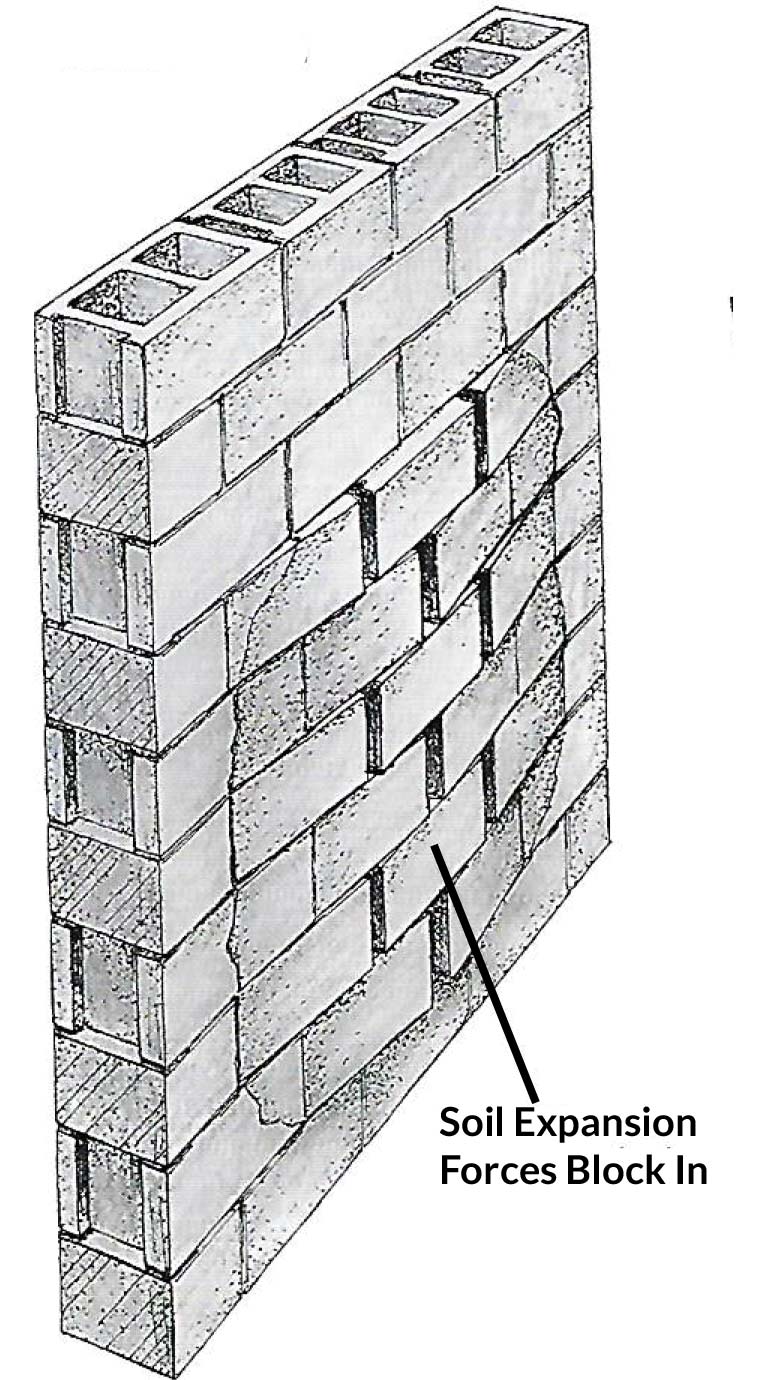
Bowed Wall
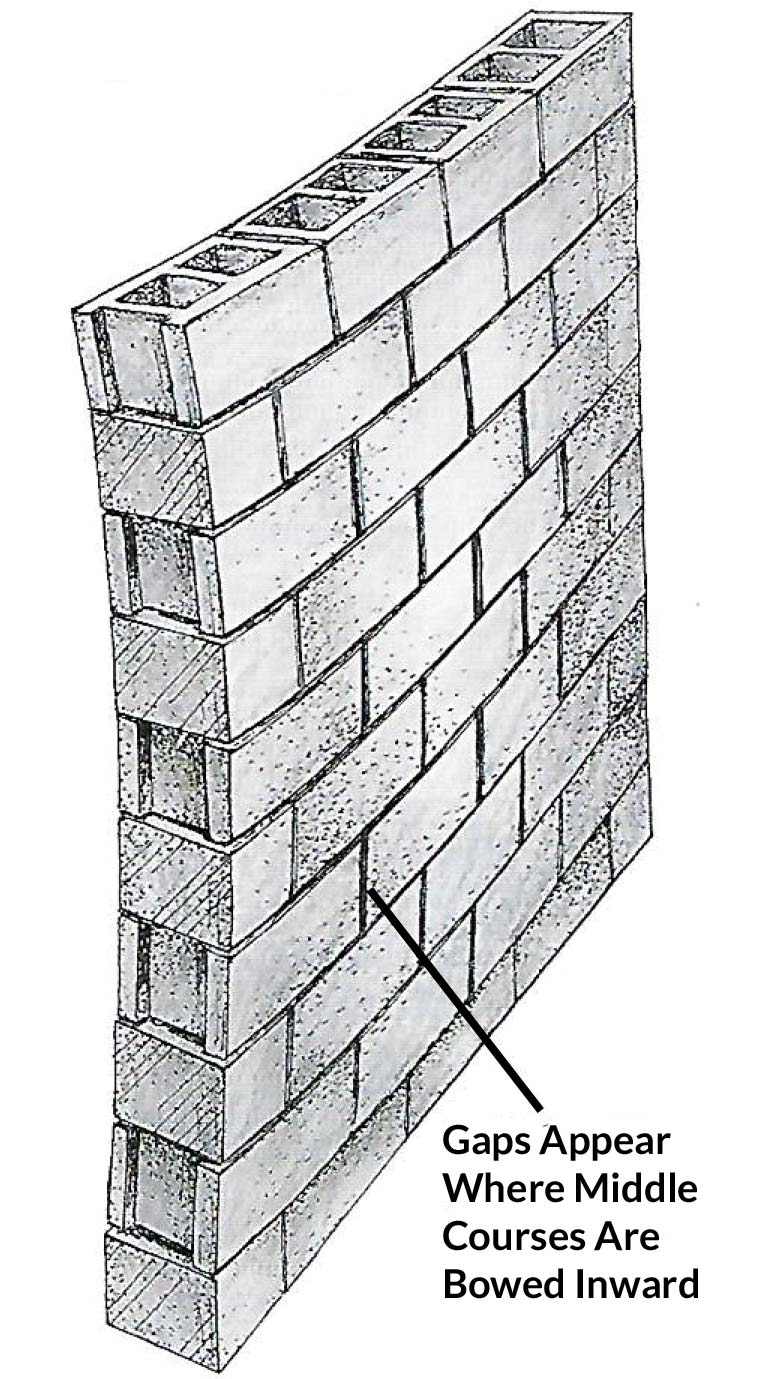
How Soil Pressure Can Shift a Block Wall
Without proper drainage, water gathers in the soil surrounding foundation walls, often finding its way into the basement. Sometimes disaster is unavoidable as heavy rains drop large amounts of rain in a short period of time. Other times, pressure builds slowly, particularly during freeze/thaw cycles. (*Any wall displaced more than 1 inch from a plumb position must be excavated. Walls displaced less than 1 inch can be braced from inside.)
Foundation Repair In Northern New Jersey
Crack Repair
Sealing foundation wall cracks using epoxy injection or polyeurothane foam to stop water leaks and stabalize structural damage.
Bowed Wall & Structural Support
Reinforcing bowed or leaning foundation walls with carbon fiber straps, wall anchors, or braces to prevent further movement.
Underpinning Solutions
Strengthening and stabilizing sinking foundations by extending the foundation depth using pins or other structural supports.
Our Foundation Repair Solutions
We perform the following six types of foundation repair.
Carbon Fiber Reinforcement
Carbon fiber reinforcement uses high-strength carbon fiber strands woven into a virtually unbreakable fabric that doesn’t stretch. During foundation repair, the carbon fibers are epoxied to the damaged foundation walls at determined intervals. A steel angle is usually added to the top of the wall between floor joists, completely stabilizing the foundation so no further movement occurs.
Epoxy Injection
In epoxy injection, a low-pressure injection of epoxy resin is pumped through injection ports installed along the length of the crack and allowed to cure to form a permanent seal. Epoxy injections are performed from inside the basement, so no excavation is required.
Footing Underpins
Depending on the type of repairs needed, we could use footing underpins to stabilize and strengthen your home’s foundation. There are several methods used to underpin a foundation, but the most common one is the mass pour method. Here, sections of the foundation are excavated in sequence to a predetermined depth below the footing and each pit filled with concrete.
Lally Columns
Lally columns are steel support columns that hold up the floor above a basement. There are many types of lally columns – brick, wood/logs, block, hollow steel, and metal columns filled with concrete. The columns are extremely strong and provide the much-needed support to floors above a basement.
Steel I-Beams
Steel I-beams are particularly useful when there is bowing or leaning in your walls – a common sign of foundation settling. The beams can cure this problem. The foundation floor is jackhammered where beams will be installed and bolted to the wooden floor joist above.
Wall Pins
Here goes your text … Select any part of your text to access the formatting toolbar.
Don’t Let a Cracked Foundation Threaten Your Home’s Safety
Call Eco-Dry Waterproofing today at 973-383-1175 or request a quote online to restore your home’s structural integrity and value today.
Get a Free Quote
*500 Off Complete Drainage System
Eco-Dry Waterproofing covers all of Northern NJ including Sussex, Morris, Warren, Passaic, Essex, Union and Bergen Counties. We backup our work with a Lifetime Dry Basement Guarantee. Financing Available (0% Financing Option. Pre-approval in 60 seconds). Contact us today!
"*" indicates required fields

